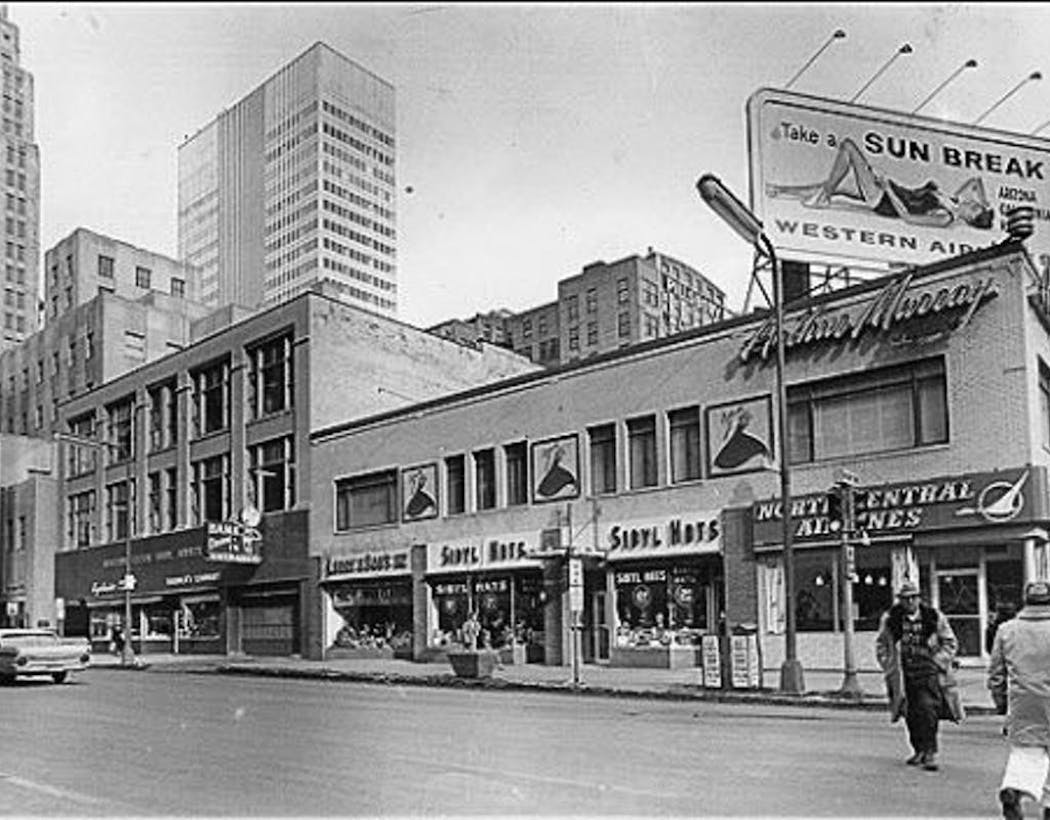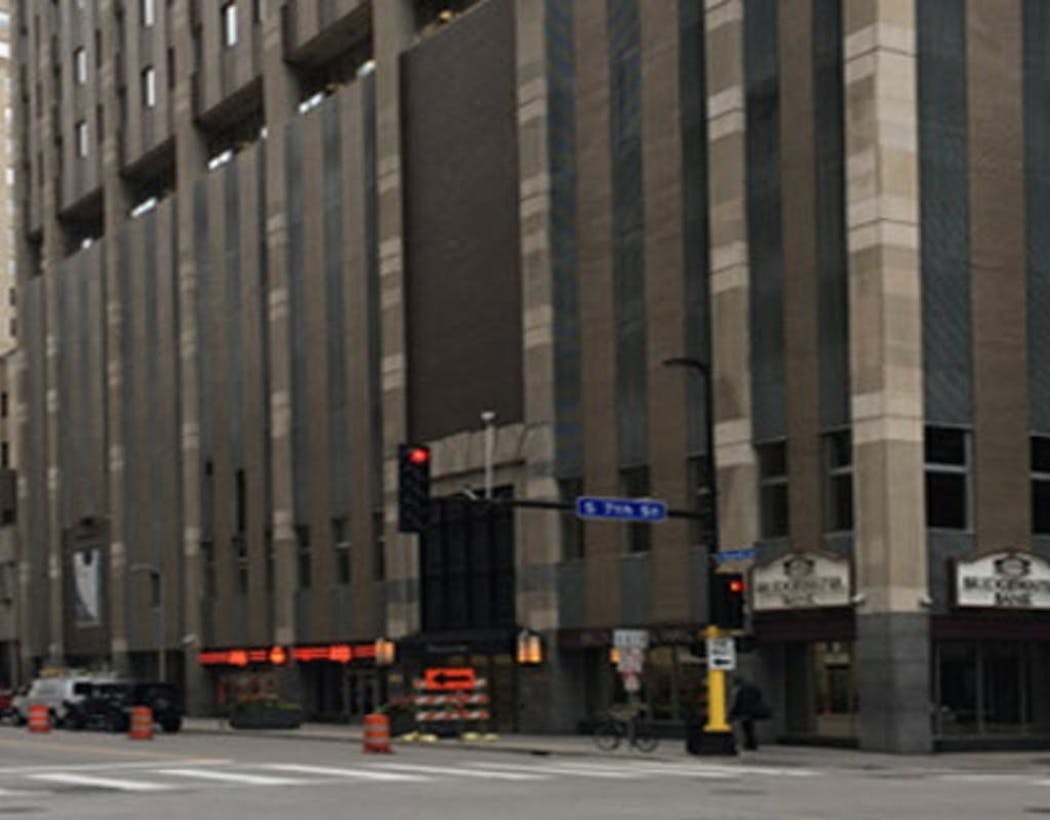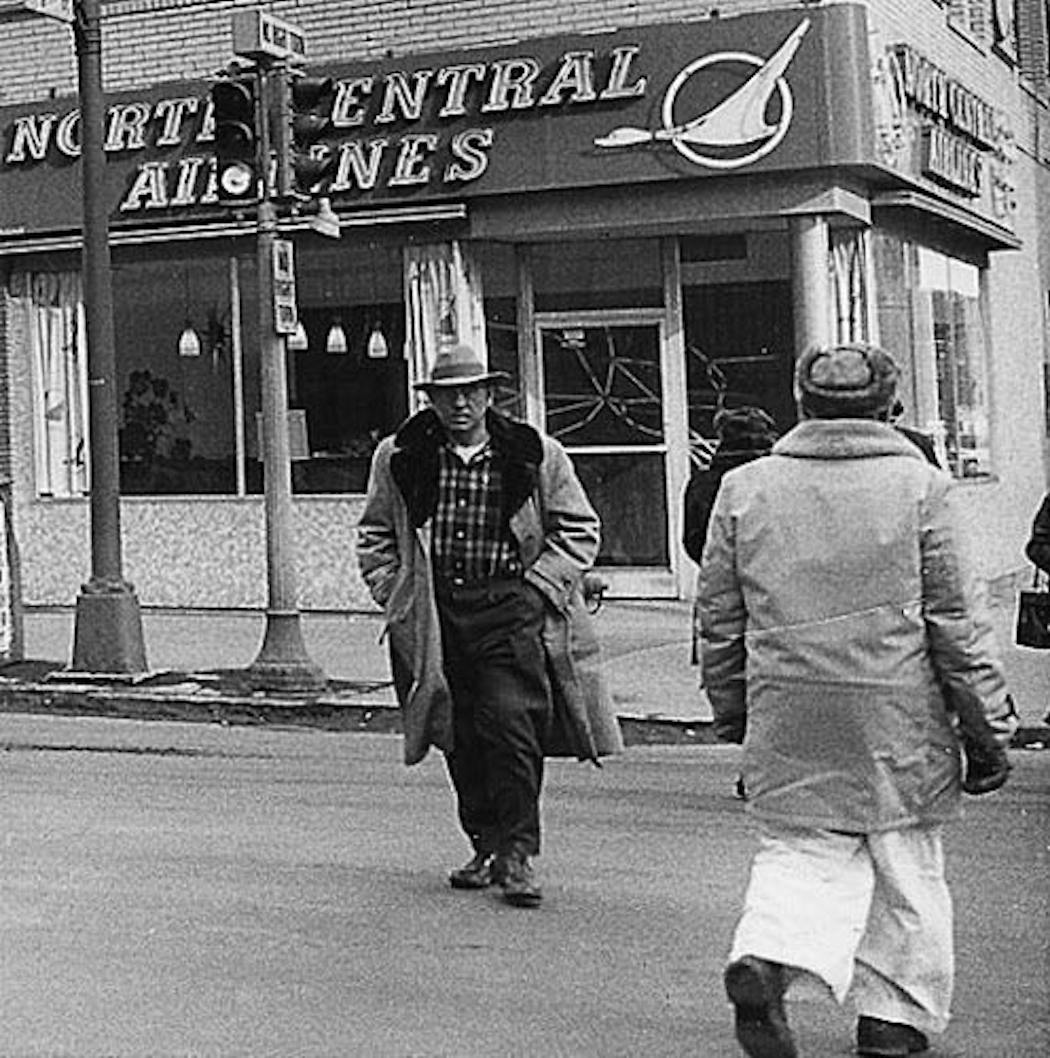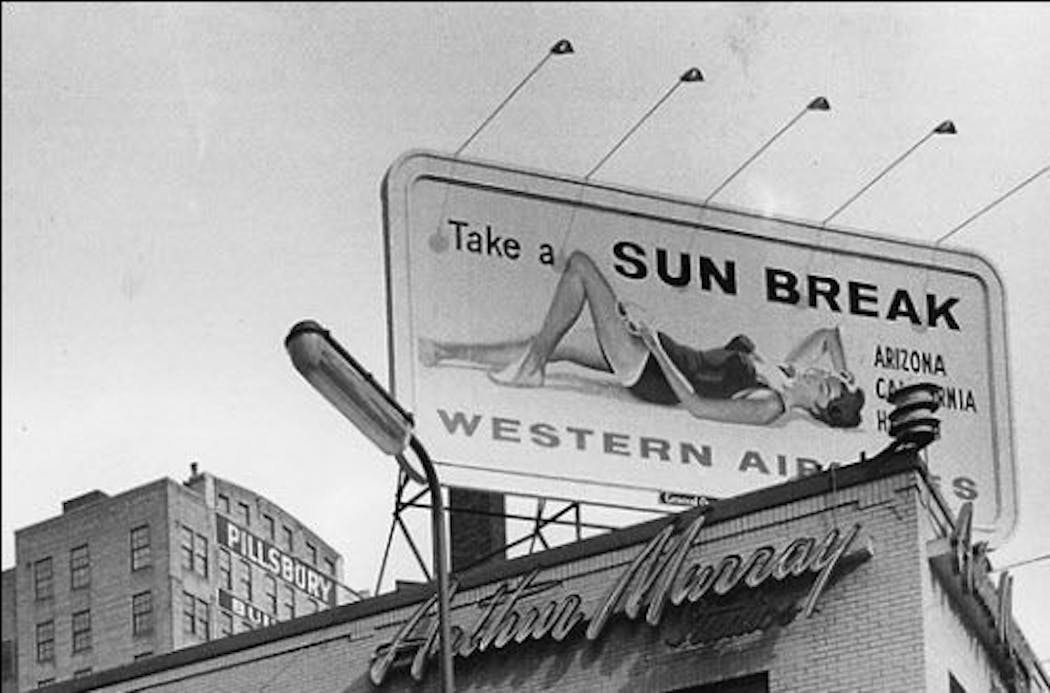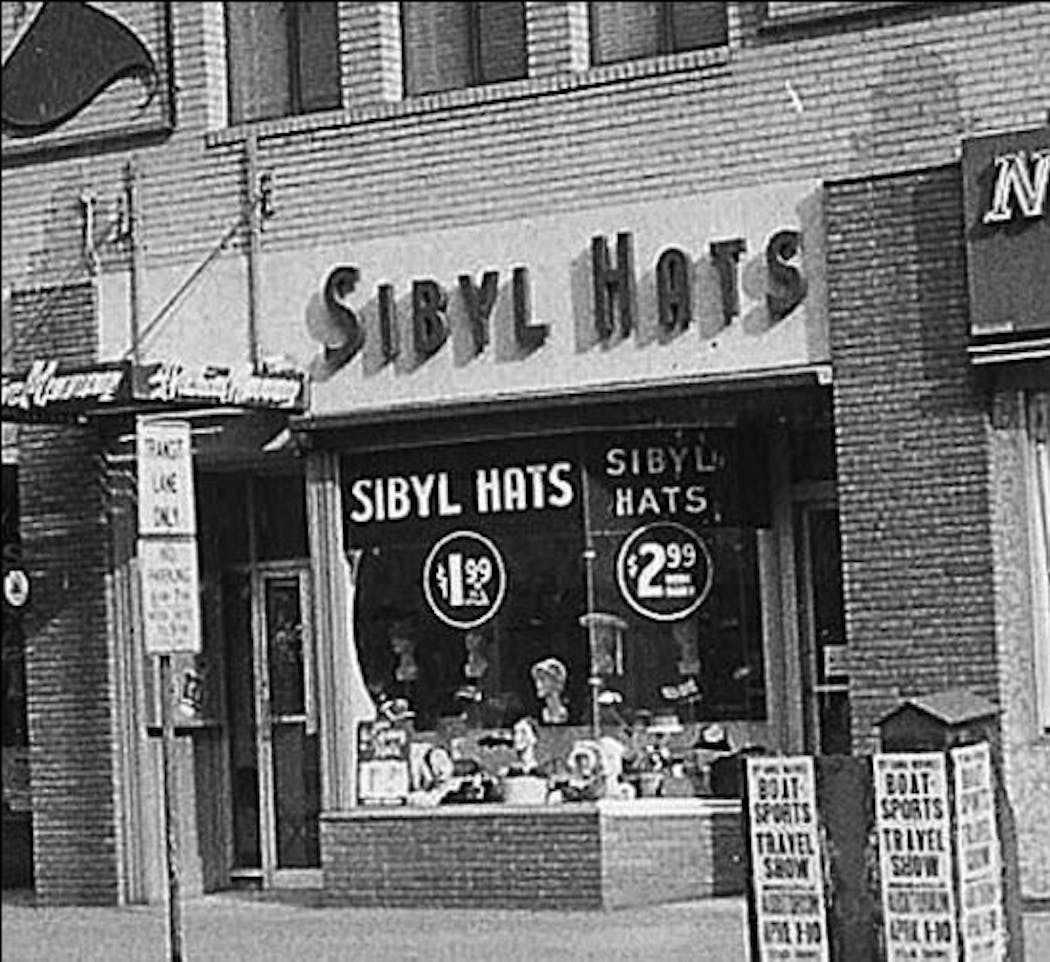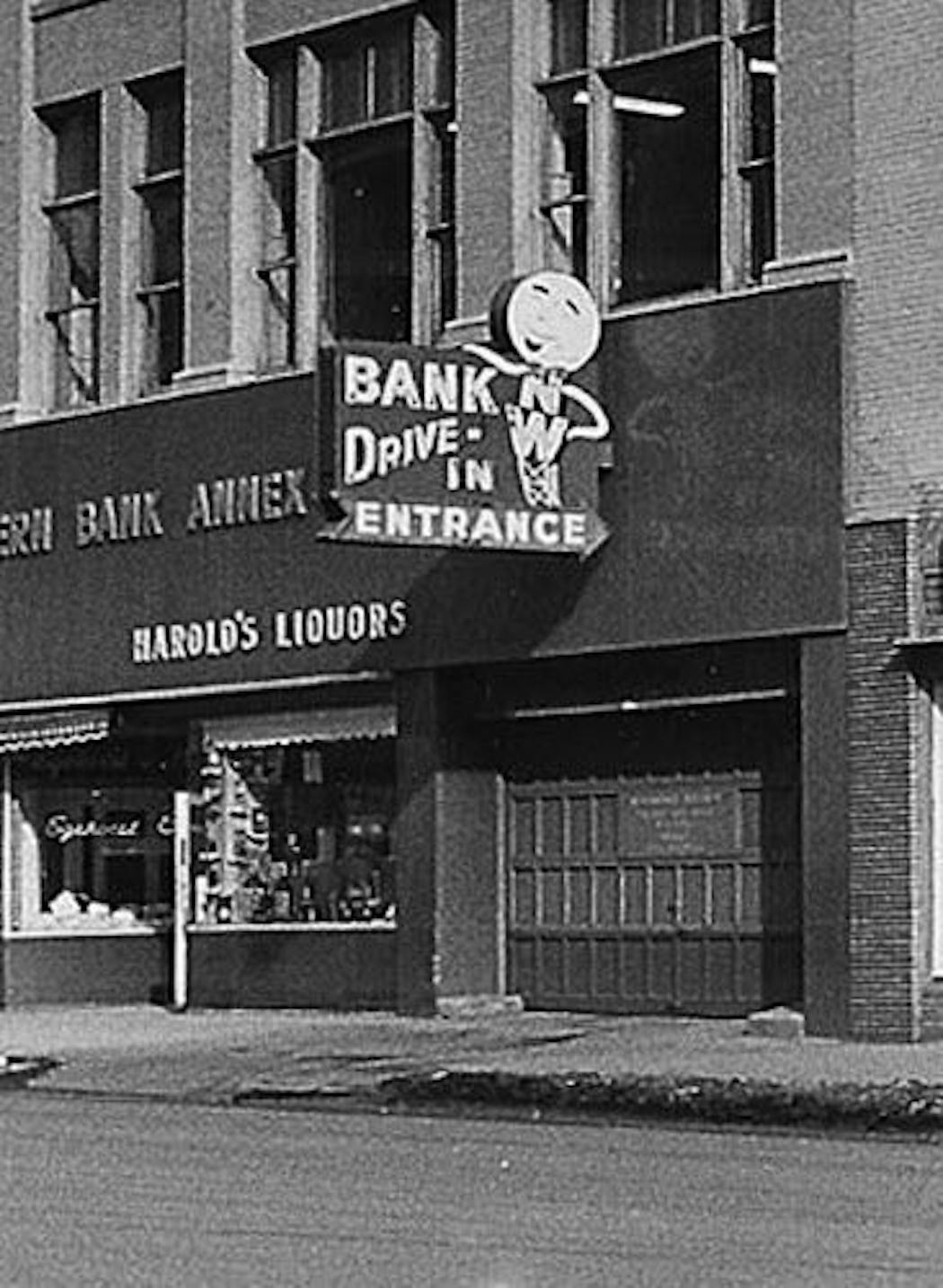In the summer of 1960, the Star Tribune sent photographers to snap a shot of every corner in downtown Minneapolis. This is the latest installment in a series that takes a closer look at those pictures, and passes on a few pieces of Minneapolis history.
For this one we're focusing in on Marquette between 6th and 7th.
If it wasn't for the Rand Tower on the left, you might have trouble placing the block. The building on the right is undistinguished, without any style or decoration. The original purpose of the building in the middle is a mystery -- it has a broad garage door, suggesting that it was a warehouse -- but such a structure seems odd for the core of downtown.
Let's look at some close-ups and see what they tell.
People remember this airline with fondness, perhaps because its logo had a name. Herman the Duck, it was called. It merged with Southern in 1979, and formed Republic -- which was eventually folded into Northwest Orient.
Let's see if we can blow up the picture a bit more:
That's not a cracked window held together with tape -- it's the route map. It's a testament to the cameras of the day: shooting from across the street, the photographer captured the lights of the office, the plants, and the ultra-modern starburst clock on the wall.
Western had some nerve:
Western was consumed by Delta in 1989. As for Arthur Murray, there's a tale. He was born in 1895 in Podhajce, Kingdom of Galicia, Austro-Hungarian Empire; emigrated with his parents, went through Ellis Island, and settled in the Lower East Side. Wikipedia:
Murray was shy as a child and self-conscious about his tall, lanky appearance. He wanted very much to be a part of the social activities that most of his friends enjoyed, particularly the dances, but was afraid to socialize with girls. At the age of 14, Joe Feigenbaum, a friend of his whom he admired because of his popularity with girls, taught him his first dance steps. To get practice on the dance floor, Murray attended weddings in his neighborhood, where he found willing dance partners of every size and age.
He became a professional dancer, and sold advice and lessons through mail-order. He opened up his first franchise dance studio in 1938 ... in Minneapolis.
Is that it? Don't know. The building could hail from the late 1930s, although it seems unlikely a new operation would build a speculative retail operation right out of the gate.
Sybil Hats: cheap!
Here's some speculative urban archeology: the bricks on the lower floor don't match the upper floor, and seem more likely to come from a post-war renovation. The tiny multi-hued mosaic tile on the North Central Airline facade suggests the same thing -- which means the darkened areas on the lighter stone (shaped like tiny Capitol domes) were possibly '30s decorations pried off for renovation.
How's that for boring speculation.
Larry and Bob brought you the exciting art of wood fiber flowers!
They look so real! Even if you make them in stripes or spots. Put one in your hair! There's fiber for that too.
A closer look at that garage door.
The mascot, of course, is the sentient version of the Weatherball, welcoming you to the Northwestern Bank Annex.
Not the most inviting auto-bank entrance; looks like you'll be directed to a dim corner of the ramp and sapped on the skull.
First floor tenants: Harold's Liquors, and something you have to be a certain age to recognize -- or a student of bygone Minneapolis brands.
Right! Of course! Egekvist! From the MNopedia:
From 1906 to the 1960s, Danish-born brothers Valdemar and Soren Egekvist built a model of immigrant enterprise. They applied Old World skills in a New World economy. Their chain of Minneapolis bakery stores ultimately led to nationally distributed baked goods.
As partners in business, their name was their "brand." But their family name wasn't originally Egekvist. Valdemar was born after his parents had been married eight years. In his honor, the family adopted "oak twig" (Egekvist) as a new name, because oak trees take the longest to sprout twigs.
Oh, those madcap, impulsive Danes. The brand was sold to a larger company in 1962, and was sold again, and again, bouncing from bakery to bakery until it evaporated in the Nineties.
Finally:
This is sad. The building may look stark and gloomy today, but when it was built in 1949 it was . . . well, stark and gloomy, but in a good way. It had a severe style that gave it a sober appeal, as if it was the sensible butler to the more flamboyant facade of the Rand across the street.
It was modernized in the '70s, when everything got thick and stupid.
The block today: swipe left or right to see how it's changed. Most of the block was razed for the Northstar Center. When it opened just two years after this picture was taken, it was an instant landmark: hotel, parking ramp, offices, shopping, and a rooftop garden.
Everything about the bottom half of the building ignores the pedestrian domain; everything about the old block it replaced served the public.
------
Note: This story has been updated to correct the description of the cross streets of this block.
Save
Save

